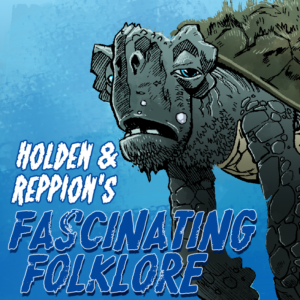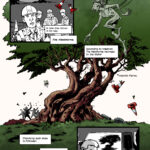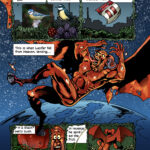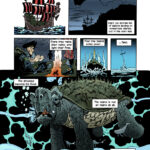Skaði is the Norse Goddess of Winter and mountains, of bow-hunting and skiing. After her father, the giant Þjazi, was murdered, Skaði journeyed alone to Asgard, to seek her vengeance. Intimidated and impressed, the Gods transformed Þjazi’s eyes into stars.
—
Skaði (“Skathee”) was the Norse Goddess of bow-hunting, and skiing, of winter, and mountains. She was a Jötunn, a word often translated into English as “giant” or “troll”, though the more literal translation of this word is “devourer”. The Jötnar (plural of Jötunn) inhabited Jotunheim (literally “world of the Jötnar”), one of the nine worlds in Norse cosmology (the others being Niflheim the land of mist, Muspelheim the land of fire, Asgard the home of the Gods, Midguard the home of the humans, Vanaheim the land of the Old Gods, Alfheim the home of the elves, Svartalfheim the home of the dwarves, and Helheim the land of the dishonourable dead). Jotunheim was the wilderness: the untamed forest and the wild, inaccessible mountains where mere mortals feared to tread. Those Jötnar who inhabited the snowy peaks were known as The Frost Giants.
Skaði was the daughter of Þjazi (“Thiassi”), son of the Frost Giant Ölvaldi, and brother of giants Iði and Gangr. Þjazi, under orders of the ever-mischievous Loki, transformed himself into a gigantic eagle and kidnapped Iðunn, Goddess of apples. Iðunn’s disappearance caused the Gods to grow old and grey, and soon they realised that Loki was to blame. Loki, taking the form of a falcon then kidnapped Iðunn back from Þjazi (transforming her into a nut so that he could carry her more easily) who, in turn, gave chase in his eagle form. In Asgard the Aesir (Gods) built a great fire which Loki flew towards but stopped short of. Þjazi however, found his feathers singed by the flames and fell to the ground where he was set upon and murdered by the Gods.
Skaði vowed to avenge her father’s death, donning her armour and carrying all available weapons she journeyed to Asgard to challenge the Gods. The Gods were reluctant to battle the fierce Jötunn however, and instead offered her compensation. Skaði was allowed her pick of husband from the Gods, although she was (for some reason) only permitted to look at their feet in order to make her choice. This resulted in her choosing the Sea God Njörðr who was, by all accounts, not a great husband to her. Odin also took the deceased Þjazi’s eyes and placed them in the night sky, where they shine down forever as stars.








Recent Comments